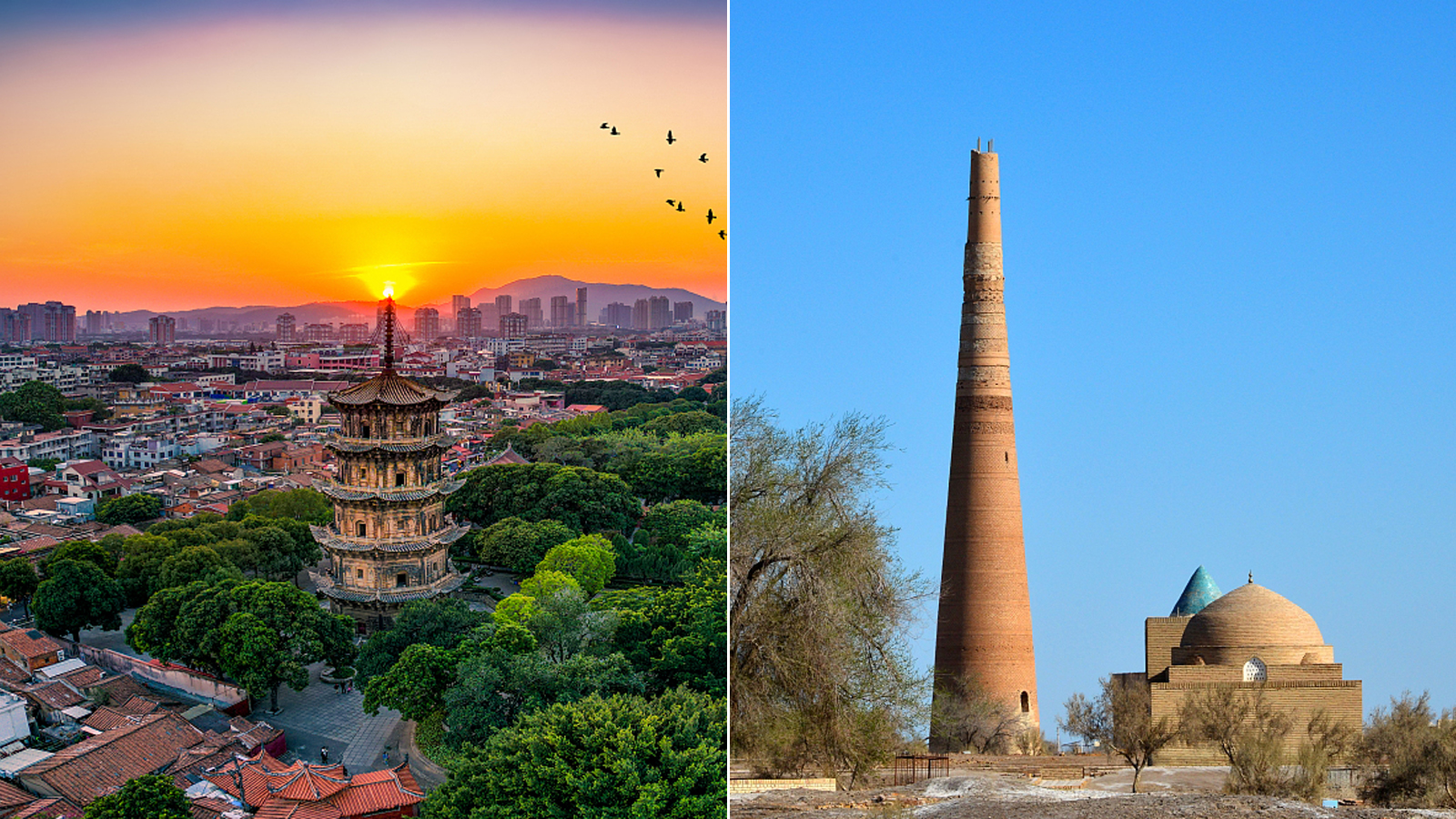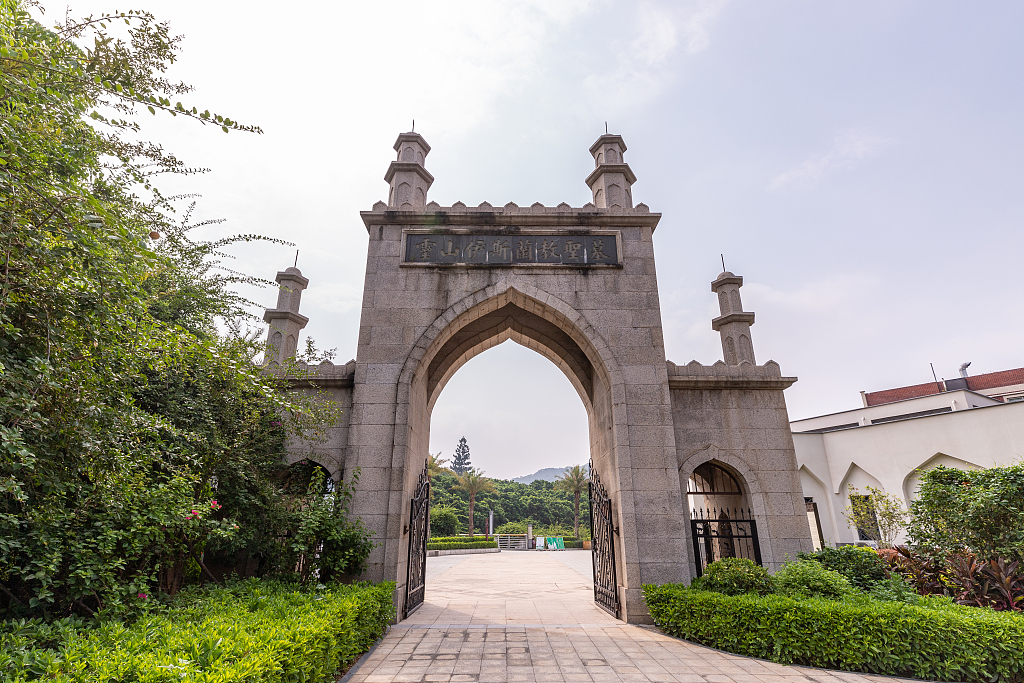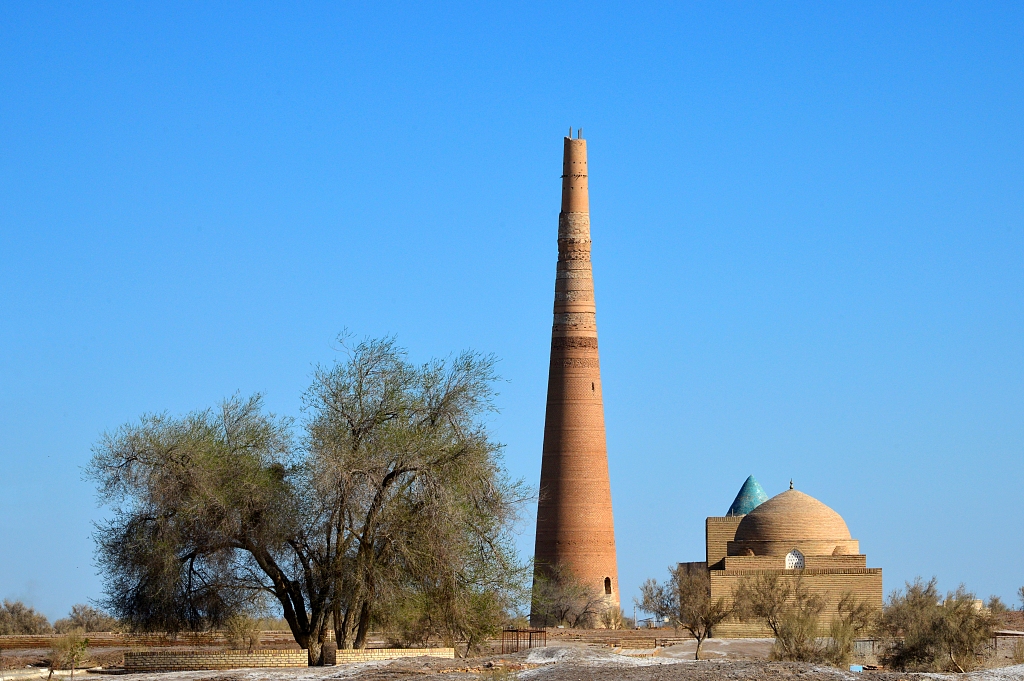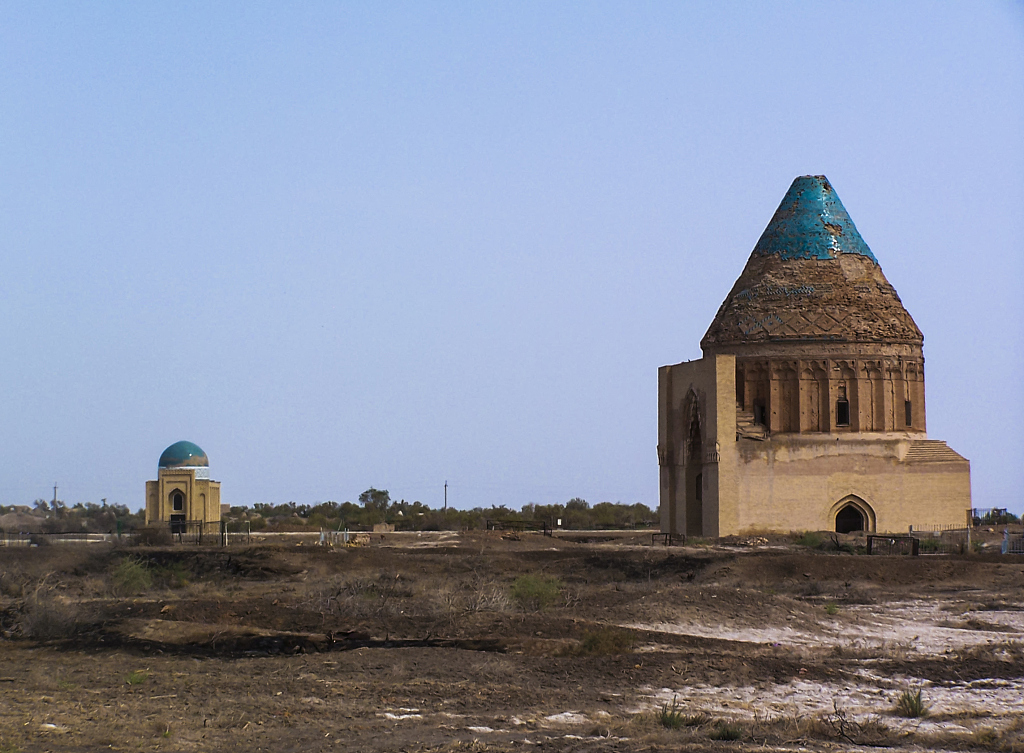
Quanzhou in China (left) and Kunya-Urgench in Turkmenistan /CFP
Quanzhou in China (left) and Kunya-Urgench in Turkmenistan /CFP
Quanzhou, a maritime emporium during the Song (960-1279) and Yuan (1279-1368) dynasties, is regarded as the start of maritime Silk Road and the world’s biggest port at the time. Before the Yuan Dynasty, from the 11th to 12th century, Kunga-Urgench, a city on the Silk Road in Turkmenistan thrived as a trade and cultural center in Central Asia. Quanzhou and Kunya-Urgench witnessed their flourishing period around the same time and both promoted regional trade and cultural exchange thanks to their convenient locations. A closer inspection of these two UNESCO World Heritage sites reveals the prosperous past of these two far-removed cities along the Silk Road.
Quanzhou: Emporium of the World during Song–Yuan China
Located on the coast of Fujian, east China, Quanzhou was once a vibrant port city, serving as a global-level emporium and key commercial hub from the 10th to 14th century.

Kaiyuan Temple is one of the 22 sites included in "Quanzhou: Emporium of the World in Song–Yuan China," which was inscribed on UNESCO's World Heritage Site list in 2021. /CFP
Kaiyuan Temple is one of the 22 sites included in "Quanzhou: Emporium of the World in Song–Yuan China," which was inscribed on UNESCO's World Heritage Site list in 2021. /CFP
"The Quanzhou: Emporium of the World in Song–Yuan China" serial property includes 22 sites of administrative buildings, statues and religious buildings. Some of the most significant include: Kaiyuan Temple, the biggest Buddhist temple in Fujian; Luoyang Bridge, China’s earliest cross-sea stone bridge; Qingjing Mosque, one of the oldest mosques in China; and the archaeological site of the Maritime Trade Office, which was established in 1087 as a national-level key institution guiding trade.
The city was first built during the Tang Dynasty (618-906) and developed into a maritime hub for the East and Southeast Asia trade network as global maritime trade flourished during the Song and Yuan periods.

The Islamic Tombs are among the 22 sites included in the "Quanzhou: Emporium of the World in Song–Yuan China serial property," which proves the integrity of a multi-religion community in ancient Quanzhou. /CFP
The Islamic Tombs are among the 22 sites included in the "Quanzhou: Emporium of the World in Song–Yuan China serial property," which proves the integrity of a multi-religion community in ancient Quanzhou. /CFP
At the time, Quanzhou had trade and commercial relations with more than 100 countries around the world and numerous Chinese hinterland and overseas entrepreneurs gathered here for trade. The centuries-long economic exchanges made Quanzhou a multi-cultural melting pot. Buddhism, Taoism, Islam, Catholicism and Nestorianism left their footprints here and many of their facilities have been well preserved to this day.
Kunya-Urgench
Situated on the left bank of the Amu Daria River, Turkmenistan, Kunya-Urgench was the capital of the Khorezm region, part of the Achaemenid Empire in the 11th and 12th century. As a key position along the ancient Silk Road starting from Chang'an (current Xian in Shaanxi Province) and extending to the Central and Western Asia, the old town was one of the richest and most beautiful cities in the East and a major center of trade and crafts in Central Asia.

The Kutlug Timur Minaret (left) and the mausoleum of Seyit Ahmet in Kunya-Urgench /CFP
The Kutlug Timur Minaret (left) and the mausoleum of Seyit Ahmet in Kunya-Urgench /CFP
Arab traveler Ibn Batuta wrote about this: "Urgench is a large and beautiful city with wide streets and numerous buildings. There is a hospital in the city where a Syrian doctor works, a building built over the grave of Najm-ad-din-Kubra."
The city flourished until the early 13th century, when the Mongols destroyed Urgench to the ground. It was later rebuilt and became the largest city in Khorezm region again in the 14th century and the prosperity lasted for another 200 years until it was seriously damaged by the warriors of Tamerlane and finally abandoned after the Amu Daria River changed its direction at the end of the 16th century.

The Soltan Tekesh Mausoleumin Kunya-Urgench /CFP
The Soltan Tekesh Mausoleumin Kunya-Urgench /CFP
The historical site now contains a series of monuments mainly from the 11th to 16th centuries, including a mosque, the gates of a caravanserai, fortresses, mausoleums and a 60-meter-high minaret. The structures provide prominent examples of classical arabesques in monochrome terra-cotta and bright coloring of enamel. They show outstanding achievements in architecture and craftsmanship whose influence reached Türkiye, Iran, Afghanistan, and India.